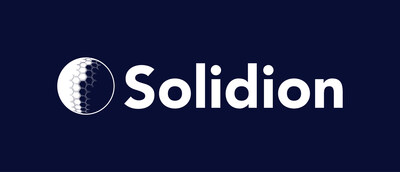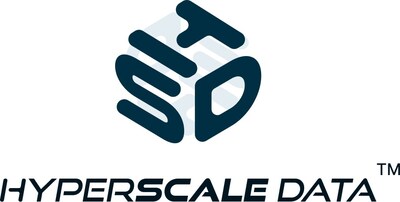HistoIndex to Present Latest Findings on AI-based Analysis using Stain-free Digital Pathology with 12 Accepted Abstracts at AASLD The Liver Meeting® 2024
Press Releases
Nov 08, 2024
SINGAPORE, Nov. 8, 2024 /PRNewswire/ — HistoIndex, a pioneering leader in artificial intelligence (AI) and stain-free digital pathology, will present its latest research findings and advancements in AI-based analysis at the 75th The Liver Meeting® (TLM) 2024, hosted by the American Association for the Study of Liver Diseases (AASLD). The conference, which brings together leading scientists, clinicians, and industry experts in hepatology, will be held from November 15th to 19th, in San Diego, California.
HistoIndex’s team, including the KOLs involved in the studies, will be sharing insights into the company’s innovative approach to assess regression and progression of liver fibrosis, including groundbreaking AI-enabled methodology that enhance the detection, quantification, and assessment of various liver conditions such as Metabolic Dysfunction-Associated Steatohepatitis (MASH) and fibrosis. With the incidence of liver diseases rising globally, these presentations are timely in showcasing how HistoIndex’s stain-free digital pathology solutions and AI technology address current challenges by providing highly accurate, reproducible, and interpretable data from liver biopsies.
As a leader in AI-based analysis using stain-free digital pathology, we are honored to have extensive representation at TLM 2024, showcasing twelve abstracts from phase 2b and phase 3 clinical trials that span four distinct mechanisms of action (MOA) in MASH. Commenting on the significance of the accepted abstracts, Dr. Dean Tai, Chief Scientific Officer at HistoIndex stated, “These findings from the four distinct MOA phase 2b/3 MASH trials, along with diverse studies highlighting the utility of our technology in cirrhotic MASH, differentiating pediatric and adult MASH, predicting clinical outcomes, and understanding hepatocellular carcinoma recurrence in chronic hepatitis B patients, underscore the transformative role of AI in advancing liver disease diagnosis, prognosis and personalized treatment. We are excited to share these advancements and their impact on clinical trials leading to routine clinical care.”
Key Highlights from HistoIndex at TLM 2024
The HistoIndex team will be involved in multiple oral and poster sessions, highlighting its commitment to advancing liver research and supporting the global hepatology community:
Oral Presentation | Sunday, November 17th, 2.45pm – 3pm
Title: AI-based digital pathology shows that denifanstat improves multiple parameters of fibrosis and reduces progression to cirrhosis in MASH patients with F2/F3 fibrosis – results of the FASCINATE-2 study
Presenter: Dr. Mary Rinella
Publication Number: 170
Poster Presentations
Poster Session I | Friday, November 15th, 1:00 PM – 2:00 PM
Title: Application of artificial intelligence algorithm as a vascular evaluation tool for intra-stage assessment in the cirrhotic patients with metabolic dysfunction-associated steatotic liver disease
Presenter: Dr Zhengxin Li
Publication Number: 1561
Title: The role of steatosis and fibrosis parameters in predicting hepatocellular carcinoma recurrence in chronic hepatitis B patients
Presenter: Dr Ke Yin
Publication Number: 1275
Poster Session II | Saturday, November 16th, 1:00 PM – 2:00 PM
Title: Comparative evaluation of zonal fibrosis patterns in pediatric and adult metabolic dysfunction-associated steatohepatitis biopsies using Second Harmonic Generation/Two Photon Excitation-based qFibrosis analysis.
Presenter: Dr Naim Alkhouri
Publication Number: TBC
Title: Evaluating impact of weight changes on histological patterns of liver fibrosis in MASH: implications for spatial interrogation
Presenter: Dr Kutbuddin Akbary
Publication Number: 2114
Title: Evaluation of the consistency and heterogeneity of adjacent sections in fibrosis assessment using AI-based qFibrosis in virtual liver needle biopsies
Presenter: Dr Yayun Ren
Publication Number: 2047
Title: Independent validation of second harmonic generation/two photon excitation imaging and artificial intelligence-based SNOF index for metabolic dysfunction associated steatohepatitis cirrhosis assessment
Presenter: Dr Kutbuddin Akbary
Publication Number: 2065
Title: Stain-free digital pathology imaging provides microarchitecturally-resolved insights into scar evolution and histological injury allowing direct clinical outcome prediction in metabolic dysfunction-associated steatotic liver disease
Presenter: Dr Jonathan Fallowfield
Publication Number: 2080
Poster Session III | Sunday, November 17th, 1:00 PM – 2:00 PM
Title: Fibrosis regression after Tirzepatide treatment of non-cirrhotic MASH for 52 weeks occurs in a zone-dependent manner
Presenter: Dr Arun Sanyal
Publication Number: 3202
Title: Validating pre-identified morphological baseline features for predicting fibrosis progression in MAESTRO-NASH
Presenter: Dr Jörn Schattenberg
Publication Number: 3184
Poster Session: Late Breaking Posters | Monday, November 18th: 8:00 AM – 5:00 PM
Title: AI and digital-based pathology corroborate reduction in fibrosis observed by conventional pathology with Efruxifermin treatment of patients with F2-F3 MASH in the HARMONY study
Presenter: Dr Mazen Noureddin
Publication Number: 5047
Title: Efruxifermin significantly reduced proportion of subjects with at-risk MASH and led to near-complete histological disease reversal at week 96 in the HARMONY study
Presenter: Dr Mazen Noureddin
Publication Number: 5021
Breakfast Meeting: Bridging Clinical Research and Clinical Care
In addition to the scientific sessions, HistoIndex will be hosting a breakfast meeting on November 15th, offering a unique opportunity for clinicians, researchers, and industry partners to interact with the HistoIndex team and KOLs on the transformative potential of AI-based analysis using stain-free digital pathology in current MASH clinical trials and its role in the routine clinical care of MASH patients post drug approvals. If you are keen, please register here today at https://forms.gle/2gBJ6mvSeadHHBNi6.
Visit HistoIndex at Booth #1225
All attendees of TLM 2024 are invited to visit the HistoIndex exhibition booth #1225 and experience the company’s Second Harmonic Generation (SHG) technology and AI-enabled analytics with hands-on interactive demonstrations. The exhibition booth will be staffed by knowledgeable company representatives eager to engage with attendees and discuss potential partnerships.
For more information about HistoIndex’s participation in TLM 2024, please visit www.histoindex.com.
—
About HistoIndex
Founded in 2010, HistoIndex pioneers in stain-free, fully automated imaging solutions for visualizing and quantifying fibrosis in biological tissues. By combining cutting-edge biophotonic technology with AI-based analysis, HistoIndex provides innovative tools to improve the assessment of fibrosis changes and drug efficacy. The Company’s breakthrough digital pathology solutions are accelerating research, expediting pharmaceutical drug development, and transforming medical standards.
SOURCE HistoIndex




